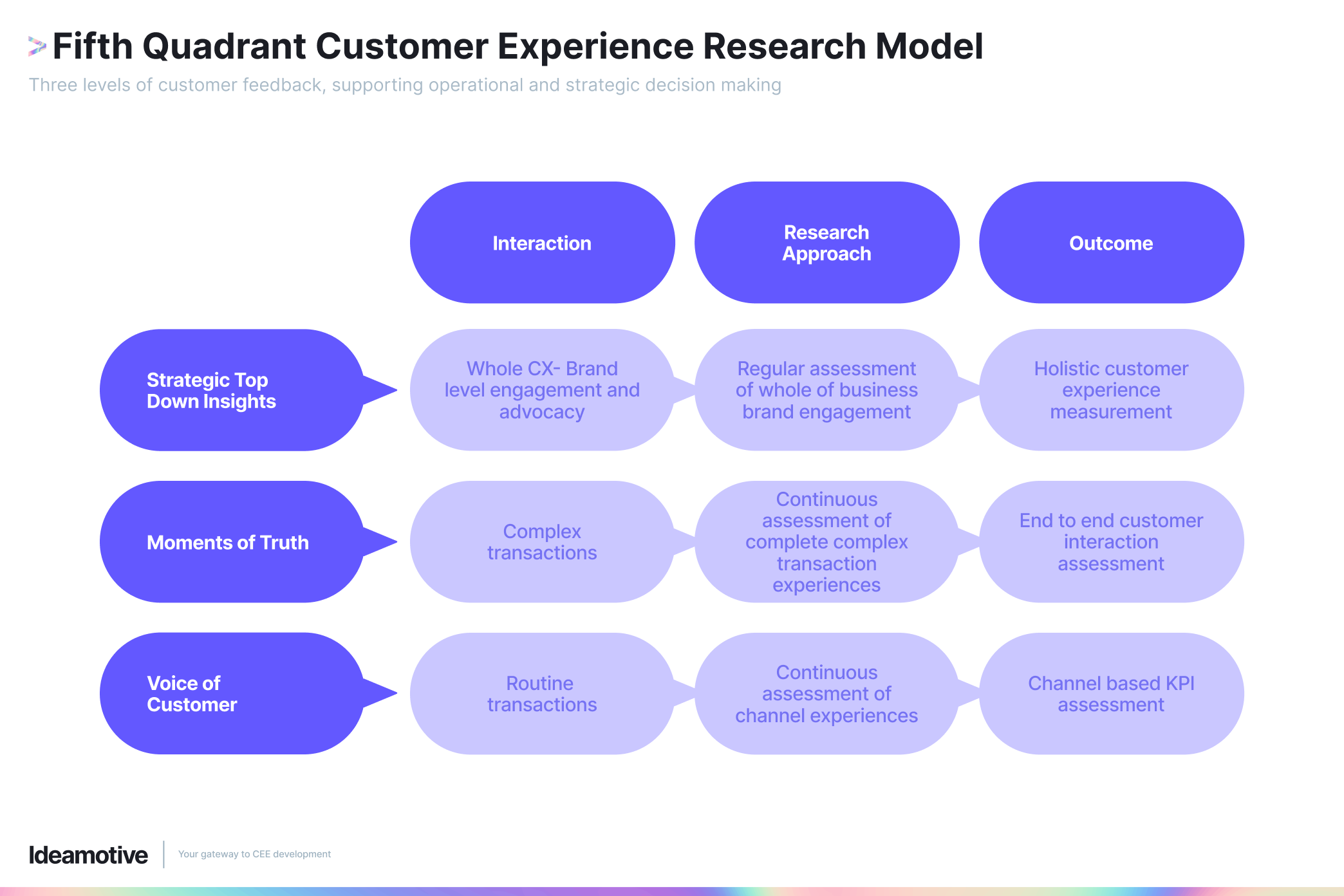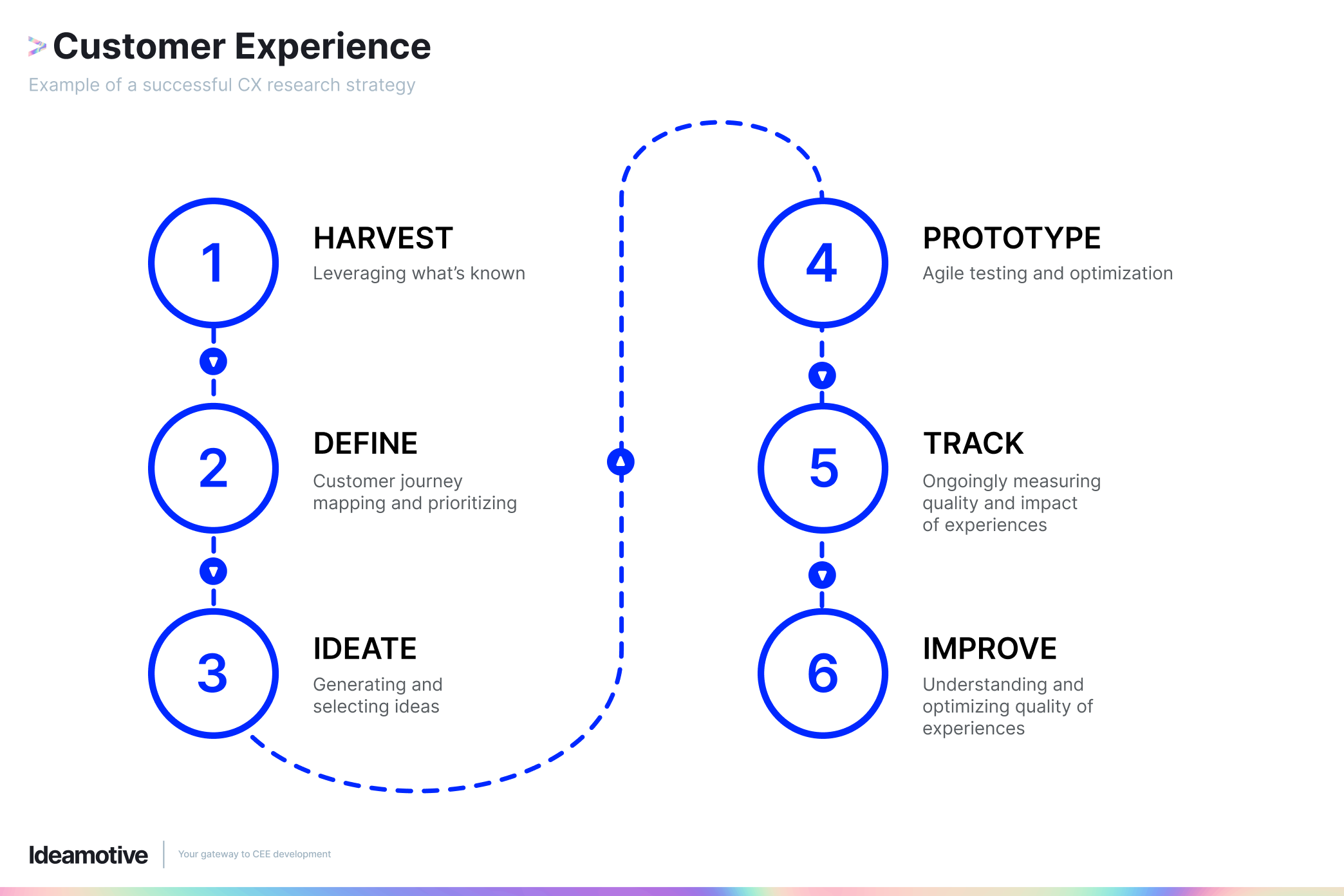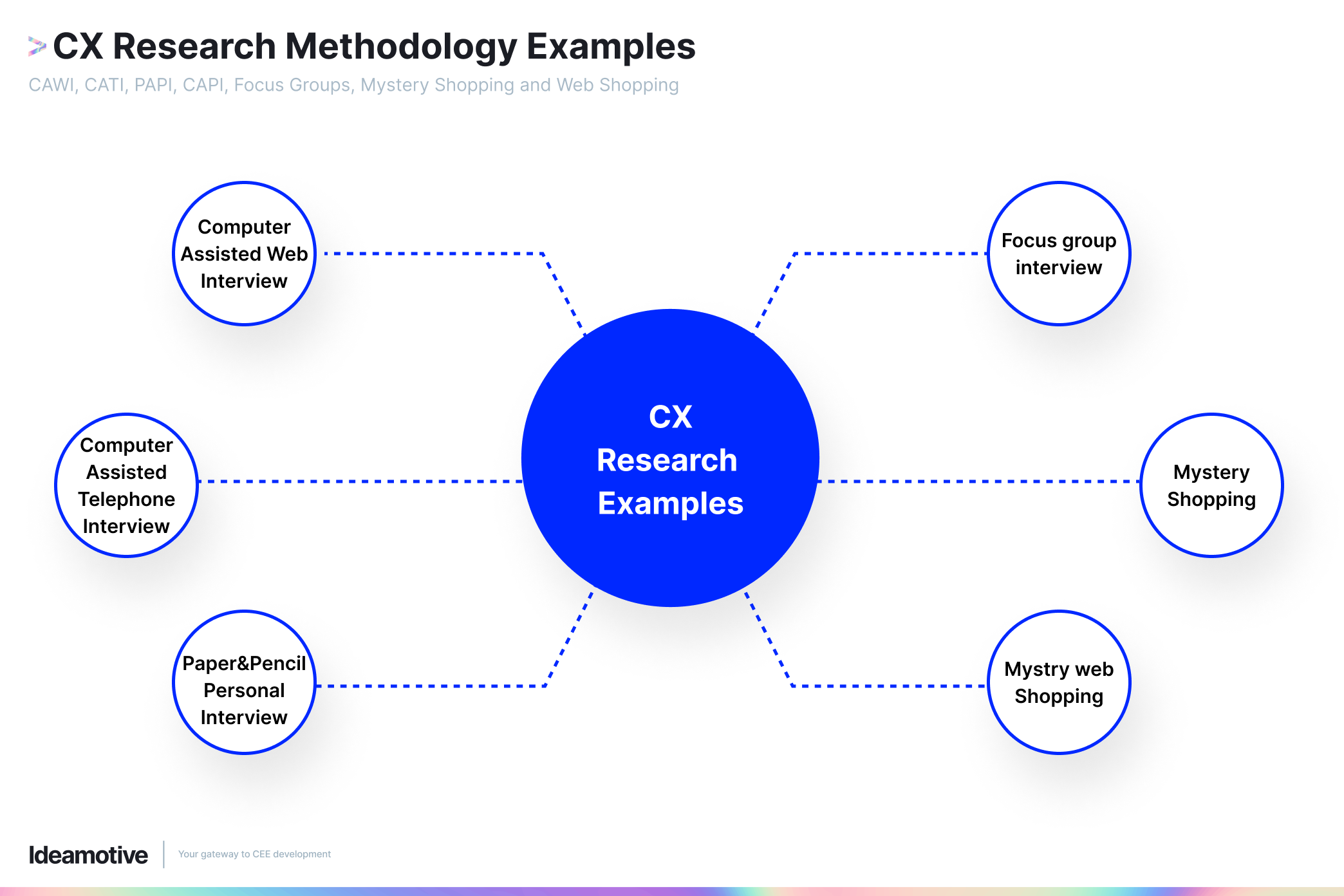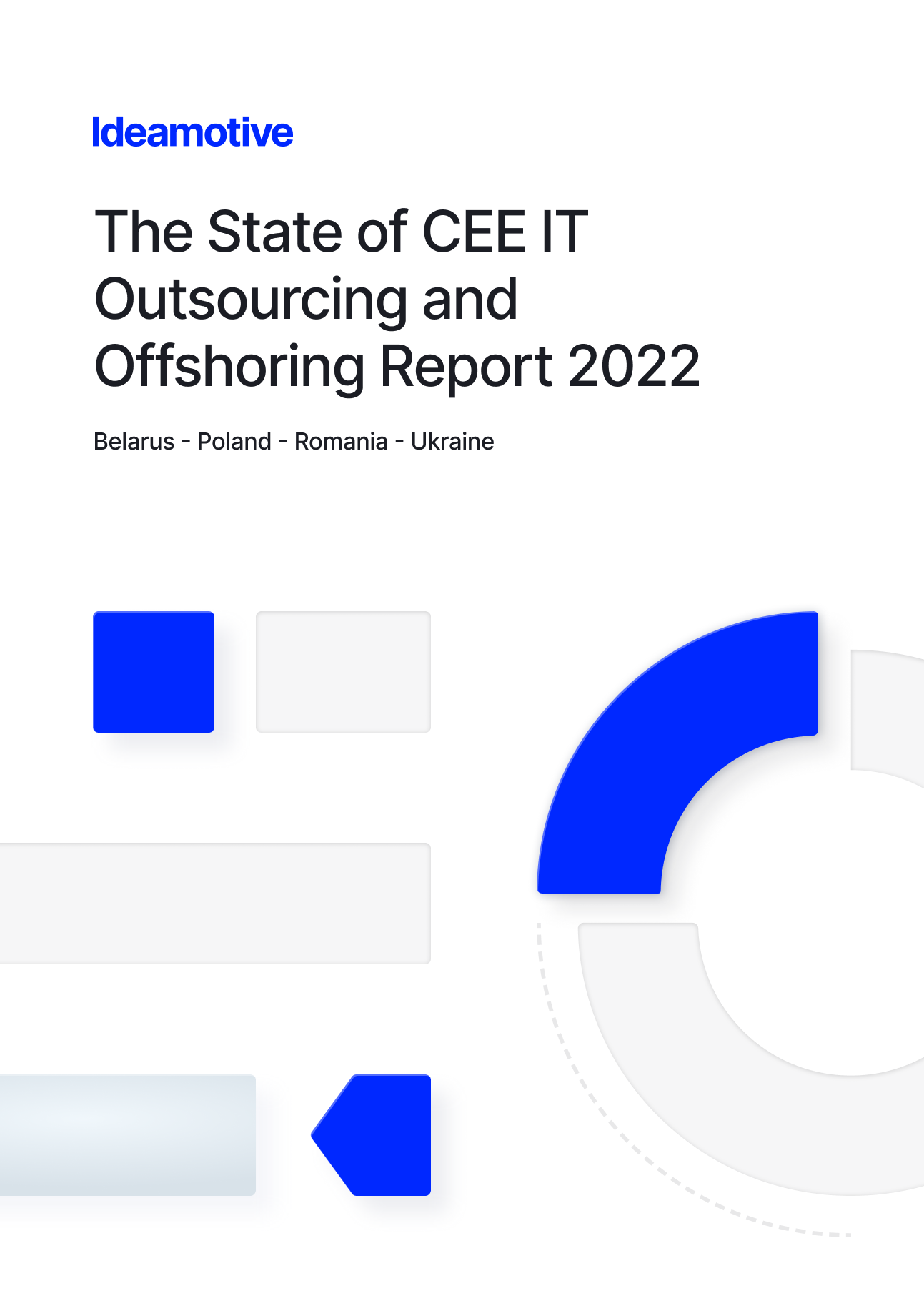To stay profitable in a competitive market, businesses should focus on retaining customers rather than simply pursuing to acquire new ones. A well-executed customer experience research (CX research) is crucial for an effective customer retention strategy.
This article aims to help you improve customer retention by exploring the factors influencing it and how CX research can help you improve them. We’ll also dive into best practices and case studies of successful customer experience research.
What drives customer retention?
First, let’s dive deeper into understanding customer retention and why it is an important business strategy.
The first reason is that it’s more economical. Retaining a customer typically involves fewer resources than customer acquisition studies, such as ad spend and marketing materials, and so it is much cheaper to retain a customer than it is to acquire a new one. In fact, a study by Invesp shows that it can cost five times more to attract a new customer than to retain a current one.

Secondly, achieving a higher customer retention rate is more effective for long-term business growth. According to the statistics in a report by Forbes, just a 5% increase in customer retention can boost a company’s profit by 25% to 95% in the long run. So what drives customer retention? There are a variety of factors. Let’s touch upon the key ones.
- Brand reputation
People are likelier to trust and become loyal to a reputable brand than one with a poor reputation. What their friends and family say about the brand can also impact their loyalty.
- Customer satisfaction
Customers who are satisfied with their purchase are more likely to remain loyal to the company, buy more products, and recommend the company to others. Factors impacting customer satisfaction include quality and value for money.
- Personalisation
Customers are more likely to stay loyal if they feel the product, service, or even targeted marketing messages are personalised to meet their needs. They are less likely to turn to the competition when they feel the brand understands them.
- Effective communication
Customers appreciate clear and consistent messaging across all touchpoints. The more a brand’s communication aligns with a customer’s values and needs, the more likely a customer will trust a brand and stay loyal.
- Customer service
Customers appreciate businesses that show empathy and understand their needs and concerns. Providing excellent customer service that addresses their issues with empathy can increase customer satisfaction and loyalty.
Customer Experience (CX) is the overarching umbrella that embodies all these factors. In essence, CX is any customer interaction with a brand, from their first impression of a brand’s reputation to ongoing support and customer service.
Popular CX research methods to improve customer retention
Excellent customer experience is the heart that drives customer retention. To improve your customer experience, you must first understand what the customer experience is, which is where customer experience research becomes so important.

Let’s now look at some of the most popular data collection methods businesses can use to conduct customer experience research and gain valuable insights.
- Customer satisfaction surveys
Surveys can be conducted online, via telephone, or through pen-and-paper feedback forms at consumer touchpoints, such as in-store at the customer service desk.
The Net Promoter Score (NPS) survey is a valuable customer satisfaction survey tool. This quantitative and qualitative research method helps companies categorise their customers as “Promoters”, “Passives”, or “Detractors” based on their responses.
Categorising their customers can help companies conduct more effective qualitative research methods with customers from each category.
- Fieldwork
Fieldwork research typically involves asking customers qualitative questions during interviews and focus groups, which can be conducted online or in person. This line of in-depth questioning can provide detailed insights into customer attitudes, preferences, and pain points.
Other types of fieldwork research include mystery shoppers and ethnographic studies. Mystery shoppers interact with a business as a typical customer, while ethnographic studies observe customer interaction with a product or service in real-world environments, such as in their homes or workplaces.
- Usability testing
Usability testing explores how customers use a product or service. This method can identify usability issues, customer expectations, and user pain points for both existing or unreleased versions of products and services. Insights from usability testing can help companies to improve their user flows.
- Customer feedback analysis
This type of customer experience research is a more indirect method of gathering customer data through social media, online reviews, and customer service interactions to identify trends and patterns in customer feedback.
- Customer journey mapping
A customer journey map combines data from all other customer experience research methods into a visual representation of the customer's interactions with a business, from initial contact to the end of their relationship with the business.
This comprehensive overview can help businesses identify pain points in the customer journey and develop strategies to enhance the customer experience, boost customer satisfaction and loyalty, and improve customer retention.
Best Practices in customer experience research
When collecting customer data during customer experience research, it’s important to follow these best practices that will help you collect accurate data to make effective, informed decisions.
- Clearly define your target audience.
- Know your objectives and have a well-defined plan.
- Use a variety of CX research methods.
- Include a variety of qualitative and quantitative research questions or strategies.
- Avoid using leading questions that are intentionally designed to cultivate bias.
- Analyze the data thoroughly to identify patterns and trends.
- Use the insights gained to develop data-driven customer retention strategies.
- Conduct customer experience research regularly to stay updated with changing consumer needs, expectations, and trends. Regular CX research also helps companies respond to customer experience issues in near real time.
When conducted effectively, CX research can give you valuable insights to build loyalty and improve customer retention. A good example of a company that built loyal customers through CX research is Zappos.
Zappos is a retailer that began by specializing in selling shoes online. Zappos’ customer experience research revealed that poor sizing is the top reason their customers would return their purchases. Many customers would buy shoes in multiple sizes to try them all on and then return the ones that do not fit.

In response, Zappos introduced its shoe sizing predictive model, which leverages AI to improve shoe size recommendations. The predictive model was so accurate that it drastically cut down their returns and delighted their customers to return for more.
Successful CX research case study
What does the CX research journey look like? To showcase it, here’s a case study of how we helped our client, Nielsen, improve customer retention through customer experience research.
We were tasked to build the company’s official mobile app. We knew we needed to conduct customer experience research to fulfil this responsibility. We started the CX research by researching the main areas of digitalisation within Nielsen’s organisation. We also analysed their company structure, asset, limitations and existing processes. For deeper insights, we conducted surveys and interviews with Nielsen employees and external app users to identify our customer’s needs and pain points properly.

With the insights gathered from our thorough research, we successfully built an app meeting all stakeholders’ expectations. More importantly, the app is widely used within Nielsen as it improves communication and information flow within the organisation and streamlines their day-to-day operations.
Conclusion
Customer experience research is an important business strategy for long-term customer satisfaction and business growth. Not only is it significantly cheaper to retain customers than acquire new ones, but improving customer retention is also proven to boost a company’s profit in the long run.
As such, businesses should regularly leverage the numerous types of CX research methods while following the best practices for CX research. Doing so can help organisations to achieve improved customer retention and gain a competitive advantage.













